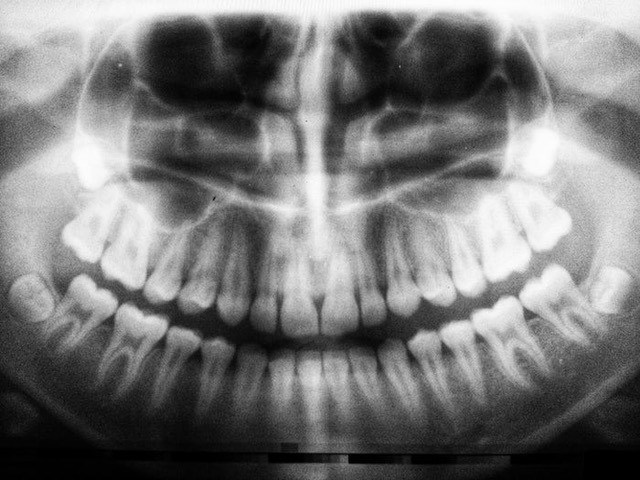At Black & Associates Dentistry, we accept and process dental insurance.
We provide supportive care to treat your dental needs in the following areas:
Restorative dentistry (including fillings, crowns, root canals, implants
Surgical dentistry (including extractions, wisdom teeth, gum grafts)
For more information visit our Tooth Talk section
Dental Examinations
A dental examination is key to ensuring ongoing dental health. Information collected from the exam and discussion with you allows for treatment decisions that best suit your needs. The exam can detect cavities, gum disease and oral manifestations of systemic diseases (diabetes, heart disease), before noticeable symptoms are present. In addition to checking for cavities and gum disease, the exam includes:
Medical history review: maintaining current status of your medical health and medication use allows us to tailor our treatment.
Radiographs (X-rays): An essential exam tool, this allows visualization of otherwise hidden areas, between teeth and in bone. It is used for detecting cavities, tumours, cysts, bone loss and anatomy of dentition.
Oral cancer screening: checking the face, lips, tongue, throat and oral soft tissues. If warranted, further screening with a Velscopeⓡ is available to the patient.
Hard and soft tissues: teeth and gums, including current restorations, signs of periodontal disease, and the jaw complex for functional and esthetic harmony.
Oral hygiene & dietary review: In general, adults using electric toothbrushes will have better oral health. Eating habits play an essential role in dental health. Changes in current practice may be recommended.
Cleaning & Whitening
Dental cleaning is the process of removing hard mineral deposits (calculus or tartar), soft deposits (plaque and food debris), and stain from your teeth. Depending on your cleaning habits and resistance to gum disease, cleanings may be recommended from every three to twelve months. In general, people maintaining good oral health receive a cleaning every six months. If the patient is sensitive to cleaning, our Registered Dental Hygienist (RDH) can offer anesthetic to more comfortably and efficiently clean the mouth. The daily use of desensitizing toothpaste may reduce sensitivity. During your appointment, the hygienist will assess gum tissue health. Oral hygiene instruction will be given according to your needs. In general, electric toothbrushes are highly recommended. Additional aids such as floss, toothpicks, Stim-U-Dentsⓡ, Soft-Picksⓡ, and Water-Pikⓡ aid in cleaning areas with difficult access. Toothpaste is a necessary part of brushing. The use of a fluoridated, low abrasive paste is recommended. Your hygienist or Drs. Black or Itagawa can discuss brands available that will meet your needs and personal preference.
Pediatric Dentistry
Although teeth don’t usually erupt in a baby’s mouth until about 6 months of age, starting an infant’s oral care habits early is important for a child’s long term health. Current recommendations from the Canadian Dental Association are that infants are seen as soon as the first tooth erupts or by their first birthday. Drs. Black and Itagawa are happy to see your child and answer any questions you many have. We see children of all ages in our office and support their dental development. If a child has specific dental needs that we cannot meet, we refer the child to a pediatric specialist. These dentists have 3 years of extensive training post dental school that is specific to pediatric populations.
Digital Dental X-rays
Digital X-rays, also known as digital radiographs have been used in dentistry for several decades. Our office is equipped with the latest technology, providing excellent diagnostic capabilities while minimizing radiation exposure.
An essential diagnostic tool, digital X-rays provide the clearest computer images of dental and other oral structures, including teeth and gums. X-rays can identify problems such as decay, broken or cracked fillings, and nerve and root details that are otherwise not visible. We use digital panoramic (giving good overview) and intra-oral (giving very detailed view of a small area) imaging to provide the most comprehensive picture of the patient’s mouth. Finding and treating problems early can save time, money and discomfort.
Gum Disease
Gum disease (periodontitis) is one of the most common dental problems. Often the disease process occurs slowly and without pain. Regular checkups are key to early diagnosis and treatment. Gum disease begins with plaque, that if not removed (twice a day with good brushing and flossing technique), will become tartar. Tartar cannot be removed with regular brushing. Tartar contains bacteria that is firmly attached to the teeth, and adjacent to the gum tissues. Gingivitis occurs when tissues become inflamed and bleed more regularly. Over time, the infection can cause the supporting bone to break down, and it is at this point that the disease has progressed to periodontitis. In severe cases, the supporting bone will not be able to hold the teeth and a tooth may be lost.
Prevention is the best medicine. Establishing good oral hygiene early on reduce the occurrence of gum disease. That said, not all people have the same resistance to gum disease. Excellent hygiene habits with poor resistance to disease may cause long term tooth loss. Initially treatment consists of regular cleanings with a dental hygienist and the establishment of good home care. If, the disease does not respond to regular cleaning, the patient may require the services of a periodontist. This specialist in gum treatment requires a further 2-3 years of further training after dental school. Surgery, antibiotics and increase professional dental cleaning for gum disease may be part of the treatment.




